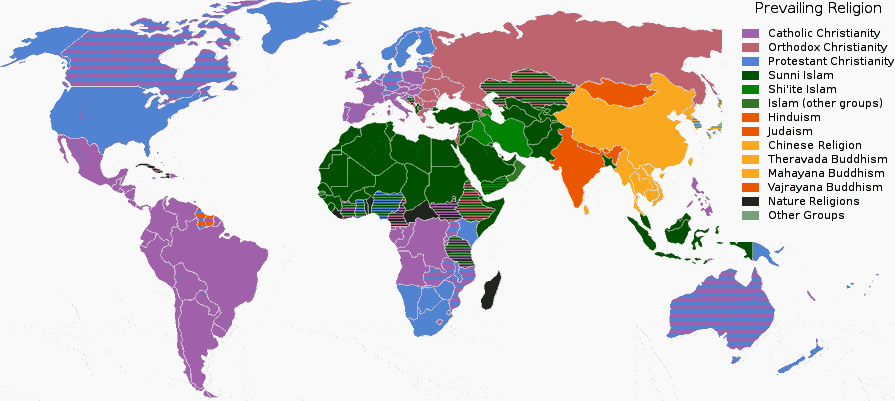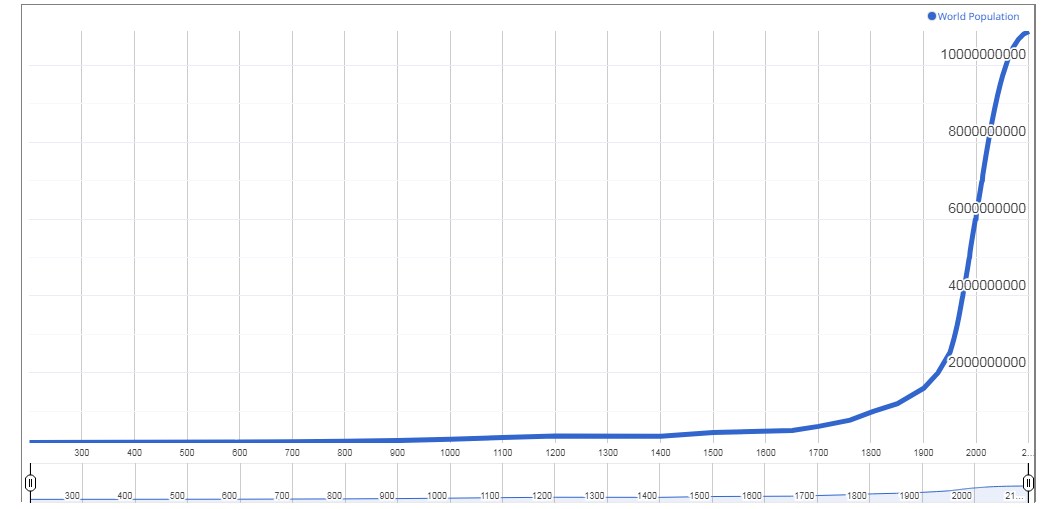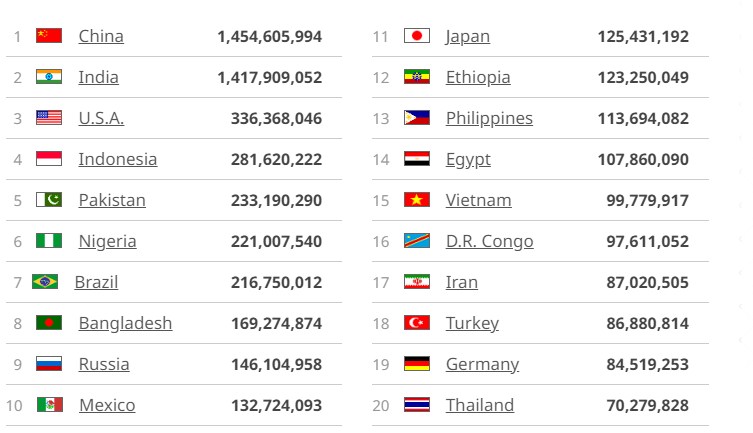World Population: Current Numbers and Future Projections
We have gathered extensive research and analysis to bring you the most comprehensive guide on world population statistics available.
Understanding World Population
As of March 2023, the estimated global population is approximately 7.9 billion people. While population growth rates have been declining over the past few decades, the world’s population is still projected to reach 9.7 billion by 2050. This population growth is not evenly distributed across the globe, as certain regions experience more significant increases than others.
Factors Affecting Population Growth
Several factors contribute to population growth, including birth rates, death rates, migration patterns, and access to healthcare and education. Birth rates and fertility rates, in particular, are critical factors in determining population growth, as countries with higher birth rates tend to experience more significant population increases.
Demographic Changes
Demographic changes, such as aging populations and declining birth rates, are also having a significant impact on global population trends. For example, as people live longer and have fewer children, the proportion of older adults in the population is increasing. This shift is likely to have far-reaching social and economic implications, such as increased demand for healthcare services and changes in retirement policies.
The Impact of Technology
Advances in technology are also influencing population growth and demographics. For instance, medical technologies have made it possible to address health issues that were once considered fatal, leading to increased life expectancy and changes in population age structures. Similarly, technological innovations in agriculture and food production have helped to feed a growing global population.
World Population: Current Numbers and Future Projections
in the primitive era of agriculture, around the epoch of 8000 B.C., the planetary populace had a mere numerical strength of approximately 5 million. A staggering 8000-year interval ensued, leading to the advent of the epoch of 1 A.D. during which the population burgeoned to an estimated 200 million (some speculations postulate it to be 300 million or even 600 million, thereby accentuating the imprecise nature of early historical population estimations). This prodigious growth rate was less than 0.05% per annum.
However, a colossal metamorphosis came to pass with the inception of the industrial revolution, whereby it took humanity the entire course of history until roughly 1800 to attain a global population of one billion. Nonetheless, in a mere 130 years, the second billion was attained in 1930, followed by the third billion in 30 years (1960), the fourth billion in 15 years (1974), and the fifth billion in a mere 13 years (1987).
Astounding as it may seem, in the 20th century alone, the global population soared from 1.65 billion to 6 billion. To put that into perspective, in 1970, the world had half the number of individuals compared to now. Nevertheless, due to dwindling growth rates, the population will require over 200 years to double yet again.
Top 10 Populated Countries in the World
we’ll take a closer look at the top 10 most populated countries in the world and explore some of the reasons behind their high population numbers.
China
China is the most populated country in the world, with an estimated population of 1,454,605,888 people. Its population has been steadily increasing for the past few decades, thanks to a combination of factors, including advances in healthcare and improvements in living standards. However, the country also has a strict one-child policy that has been in place since the late 1970s, which has helped to slow down its population growth rate.
India
India is the second most populated country in the world, with an estimated population of 1,417,908,826 people. Its population has been growing rapidly, and it is expected to surpass China as the most populated country in the world in the near future. One of the main reasons for India’s high population growth rate is its large youth population, with around 50% of its population being under the age of 25.
United States
The United States is the third most populated country in the world, with an estimated population of 336 million people. Its population has been steadily increasing over the past few decades, thanks in part to high levels of immigration. The country’s population growth rate is relatively low compared to some other countries, with a fertility rate of around 1.8 children per woman.
Indonesia
Indonesia is the fourth most populated country in the world, with an estimated population of 281 million people. Its population has been steadily increasing over the past few decades, and it is expected to continue to do so in the future. One of the main reasons for Indonesia’s high population growth rate is its relatively high fertility rate, which is around 2.4 children per woman.
Pakistan
Pakistan is the fifth most populated country in the world, with an estimated population of 233 million people. Its population has been growing rapidly, thanks in part to high fertility rates and improvements in healthcare. However, the country also faces several challenges related to its population, including a lack of access to education and healthcare for many of its citizens.
Nigeria
Nigeria is the sixth most populated country in the world, with an estimated population of 221 million people. Its population has been growing rapidly, thanks in part to high fertility rates and improvements in healthcare. However, the country also faces several challenges related to its population, including a lack of access to education and healthcare for many of its citizens.
Brazil
Brazil is the seventh most populated country in the world, with an estimated population of 217 million people. Its population has been steadily increasing over the past few decades, thanks in part to improvements in healthcare and living standards. However, the country also faces several challenges related to its population, including high levels of inequality and poverty.
Bangladesh
Bangladesh is the eighth most populated country in the world, with an estimated population of 169 million people. Its population has been steadily increasing over the past few decades, thanks in part to improvements in healthcare and living standards. However, the country also faces several challenges related to its population, including high levels of poverty and a lack of access to education and healthcare.
Russia
Russia is the ninth most populated country in the world, with an estimated population of 146 million people. Its population has been steadily declining over the past few decades, thanks in part to low fertility rates and high levels of emigration. The country also faces several challenges related to its population
Mexico
Mexico is the tenth most populated country in the world, with an estimated population of 132 million people. Its population has been steadily increasing over the past few decades, thanks in part to improvements in healthcare and living standards. However, the country also faces several challenges related to its population, including high levels of poverty and inequality.
Below is the summarized table of the above:
Population of the World and It’s Historical in 2020
| Year (July 1) |
Population | Annual % Change |
Annual Change |
Median Age |
Fertility Rate |
Density (P/Km²) |
| 2020 | 7,794,798,739 | 1.05 % | 81,330,639 | 30.9 | 2.47 | 52 |
| 2019 | 7,713,468,100 | 1.08 % | 82,377,060 | 29.8 | 2.51 | 52 |
| 2018 | 7,631,091,040 | 1.10 % | 83,232,115 | 29.8 | 2.51 | 51 |
| 2017 | 7,547,858,925 | 1.12 % | 83,836,876 | 29.8 | 2.51 | 51 |
| 2016 | 7,464,022,049 | 1.14 % | 84,224,910 | 29.8 | 2.51 | 50 |
| 2015 | 7,379,797,139 | 1.19 % | 84,594,707 | 30 | 2.52 | 50 |
| 2010 | 6,956,823,603 | 1.24 % | 82,983,315 | 28 | 2.58 | 47 |
| 2005 | 6,541,907,027 | 1.26 % | 79,682,641 | 27 | 2.65 | 44 |
| 2000 | 6,143,493,823 | 1.35 % | 79,856,169 | 26 | 2.78 | 41 |
| 1995 | 5,744,212,979 | 1.52 % | 83,396,384 | 25 | 3.01 | 39 |
| 1990 | 5,327,231,061 | 1.81 % | 91,261,864 | 24 | 3.44 | 36 |
| 1985 | 4,870,921,740 | 1.79 % | 82,583,645 | 23 | 3.59 | 33 |
| 1980 | 4,458,003,514 | 1.79 % | 75,704,582 | 23 | 3.86 | 30 |
| 1975 | 4,079,480,606 | 1.97 % | 75,808,712 | 22 | 4.47 | 27 |
| 1970 | 3,700,437,046 | 2.07 % | 72,170,690 | 22 | 4.93 | 25 |
| 1965 | 3,339,583,597 | 1.93 % | 60,926,770 | 22 | 5.02 | 22 |
| 1960 | 3,034,949,748 | 1.82 % | 52,385,962 | 23 | 4.90 | 20 |
| 1955 | 2,773,019,936 | 1.80 % | 47,317,757 | 23 | 4.97 | 19 |
Source: The United Nations Department of Economic and Social Affairs, Population Division provided an in-depth analysis of data in their report titled “World Population Prospects: The 2019 Revision” using the medium-fertility variant.
World Population Future Forecast (2020-2050)
| Year (July 1) |
Population | Annual % Change |
Annual Change |
Median Age |
Fertility Rate |
Density (P/Km²) |
| 2020 | 7,794,798,739 | 1.10 % | 83,000,320 | 31 | 2.47 | 52 |
| 2025 | 8,184,437,460 | 0.98 % | 77,927,744 | 32 | 2.54 | 55 |
| 2030 | 8,548,487,400 | 0.87 % | 72,809,988 | 33 | 2.62 | 57 |
| 2035 | 8,887,524,213 | 0.78 % | 67,807,363 | 34 | 2.70 | 60 |
| 2040 | 9,198,847,240 | 0.69 % | 62,264,605 | 35 | 2.77 | 62 |
| 2045 | 9,481,803,274 | 0.61 % | 56,591,207 | 35 | 2.85 | 64 |
| 2050 | 9,735,033,990 | 0.53 % | 50,646,143 | 36 | 2.95 | 65 |
Milestones of the World’s Population
10 Billion (2058): According to the United Nations, the world’s population is projected to reach 10 billion by the year 2058.
9 Billion (2037): It is expected that the world’s population will reach 9 billion by the year 2037.
8 Billion (2022): On November 15, 2022, the United Nations reported that the world’s population had reached 8 billion people.
7 Billion (2010): The United Nations revised its estimation in 2022, reporting that the world’s population reached 7 billion in late 2010. This was previously estimated to have occurred on October 31, 2011. The US Census Bureau provided a lower estimate, placing the 7 billion mark on March 12, 2012.
6 Billion (1998): The world’s population reached 6 billion in 1998.
Global Population by Geographic Region
| # | Region | Population (2020) |
Annual Change |
Net Change |
Density (P/Km²) |
Land Area (Km²) |
Migrants (net) |
Fert. Rate |
Med. Age |
Urban Pop. % |
World Share |
| 1 | Asia | 4,641,054,775 | 0.86 % | 39,683,577 | 150 | 31,033,131 | -1,729,112 | 2.2 | 32 | 0 % | 59.5 % |
| 2 | Africa | 1,340,598,147 | 2.49 % | 32,533,952 | 45 | 29,648,481 | -463,024 | 4.4 | 20 | 0 % | 17.2 % |
| 3 | Europe | 747,636,026 | 0.06 % | 453,275 | 34 | 22,134,900 | 1,361,011 | 1.6 | 43 | 0 % | 9.6 % |
| 4 | Latin America and the Caribbean | 653,962,331 | 0.9 % | 5,841,374 | 32 | 20,139,378 | -521,499 | 2 | 31 | 0 % | 8.4 % |
| 5 | Northern America | 368,869,647 | 0.62 % | 2,268,683 | 20 | 18,651,660 | 1,196,400 | 1.8 | 39 | 0 % | 4.7 % |
| 6 | Oceania | 42,677,813 | 1.31 % | 549,778 | 5 | 8,486,460 | 156,226 | 2.4 | 33 | 0 % | 0.5 % |
Religious Composition of the Global Population

The Pew Forum conducted a study based on the 2010 global population of 6.9 billion, which revealed the following religious demographics:
- Christians make up 31% of the world population, totaling 2,173,180,000 people. Of this group, 50% are Catholic, 37% are Protestant, 12% are Orthodox, and 1% identify with other Christian denominations.
- Muslims account for 23% of the world population, with a total of 1,598,510,000 individuals. Among them, 87-90% are Sunni and 10-13% are Shia.
- No religious affiliation is claimed by 16% of the world population, amounting to 1,126,500,000 people. This group includes atheists, agnostics, and those who do not associate with any particular religion. In the United States, this group represents 20% of the population.
- Hindus make up 15% of the world population, with a total of 1,033,080,000 individuals. The overwhelming majority (94%) of Hindus live in India.
- Buddhists account for 7% of the world population, totaling 487,540,000 people. Approximately half of all Buddhists live in China.
- Folk Religionists make up 6% of the world population, with a total of 405,120,000 people. This group includes individuals who practice faiths that are closely associated with a particular group of people, ethnicity, or tribe.
- Other religions, including Baha’i faith, Taoism, Jainism, Shintoism, Sikhism, Tenrikyo, Wicca, Zoroastrianism, and others, account for 1% of the world population, totaling 58,110,000 individuals.
- Jews make up 0.2% of the world population, with a total of 13,850,000 individuals. Four-fifths of all Jews live in either the United States (41%) or Israel (41%).


